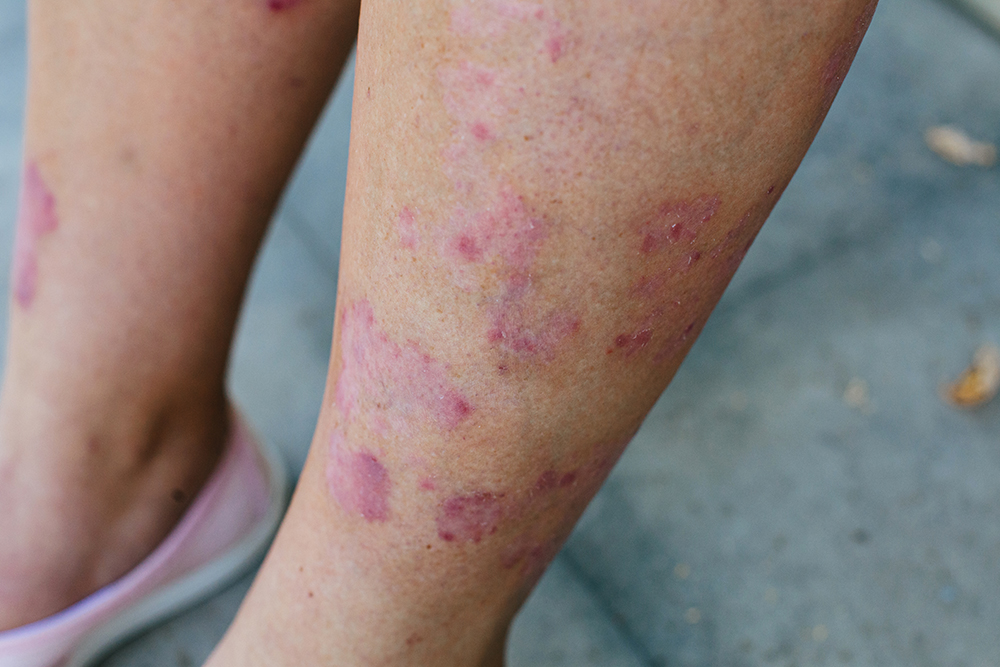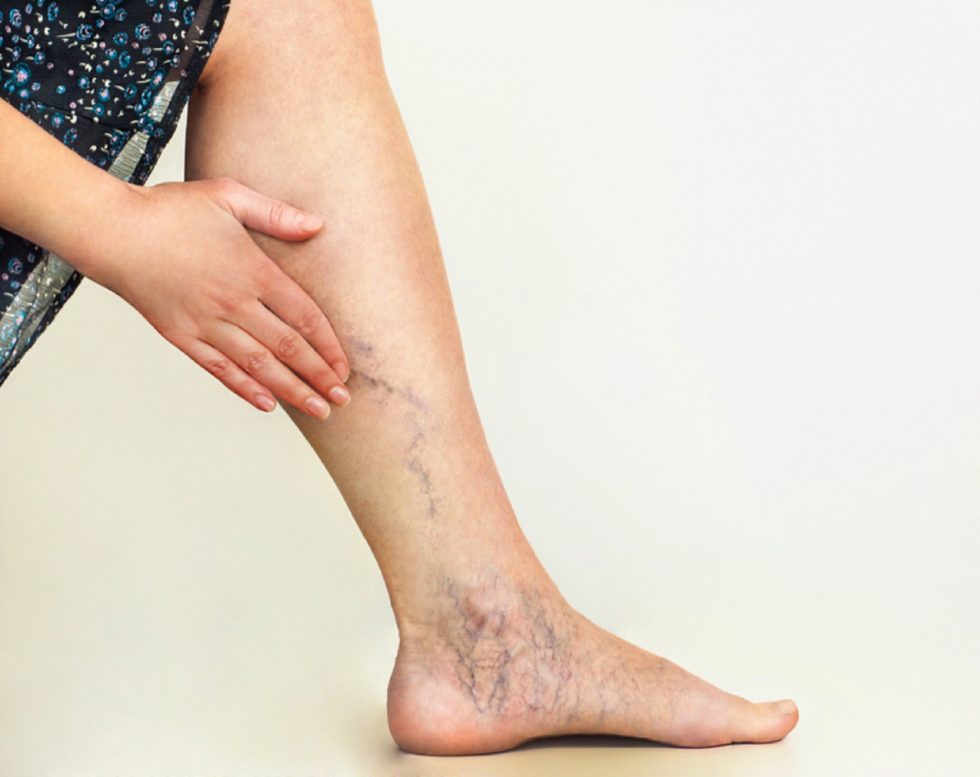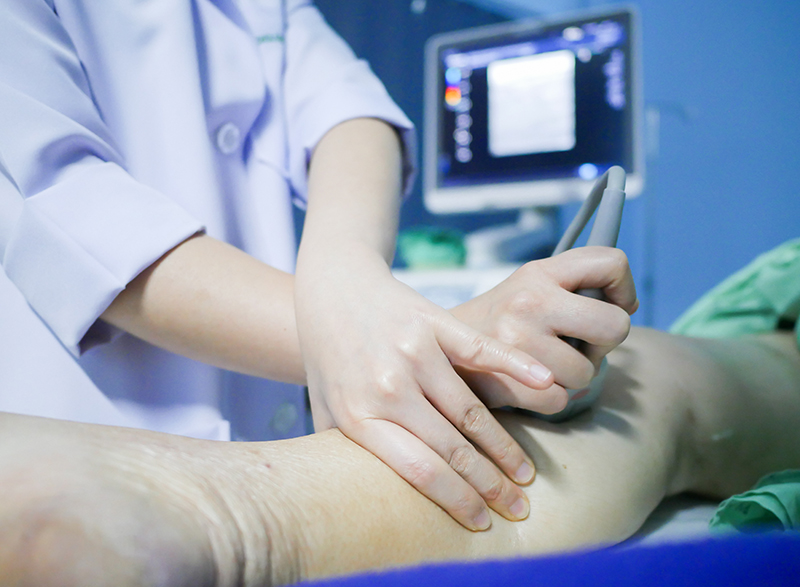When Should I Worry About My Leg Rash?
Author: StrideCare Internal Team

Are You Experiencing Any of The Following Symptoms?
- Skin discoloration
- Dry, scaly, flaky, or leathery skin
- Pain or swelling of the legs and feet
- Intensely itchy skin
- Visible bumps on your legs and feet
- Skin that is warm to the touch
- Visible signs of varicose veins
- Open sores and ulcers that won’t heal
- Leg hair loss
Your Leg Rash Could Be a Vascular Issue
For most people, a leg rash or lower leg redness is just a mild annoyance. For others, it’s far more serious and a sign that your veins are not circulating blood flow properly. Our veins and arteries work together to allow blood to flow to and from the heart and throughout our body. Over time, our veins may not work as well as they used to. They can also become diseased as we age, and the same goes for our arteries, which can develop a buildup of plaque and other issues. As a result, blood flow is restricted and can pool in our lower extremities. This leads to a host of symptoms such as a leg rash and lower leg redness, which can be associated with any of the following:
- Chronic Venous Insufficiency (CVI)
CVI is characterized by broken valves in veins that don’t hold a seal. As a result, blood pressure builds up in the lower legs and causes a pooling of blood that leads to swelling and skin changes. One such skin change is a condition known as venous stasis dermatitis. This is an inflammation of the skin highlighted by red, scaly, dry patches across the legs and on the ankles.
- Varicose Veins
Varicose veins are a common condition that affect roughly 25% of men and women in the United States. More than just a cosmetic annoyance, varicose veins can become twisted and painful. They may lead to a variety of symptoms, including itchy skin and leg rash.

- Peripheral Arterial Disease (PAD)
PAD affects approximately 6.5 million people age 40 and older. It is characterized by a plaque buildup on the walls of the major blood vessels or arteries, causing them to narrow. The classic symptom of PAD is pain in the legs with physical activity such as walking. But PAD can also cause redness and other color changes in the skin that take on the appearance of a rash.
- Deep Vein Thrombosis
This is a blood clot inside one of the veins deep within your body, often in the thighs or legs. One common complication of DVT is known as post-thrombotic syndrome. People with this syndrome may have a swollen leg that feels heavy and hurts. The skin on their leg may also become discolored and itch, and a rash may develop. More severe cases of post-thrombotic syndrome can lead to the formation of chronic wounds.
How Do I Treat a Leg Rash Caused by Vascular Issues?
It’s important not to overlook a leg rash or lower leg redness. Beyond benign issues such as an allergic reaction or eczema, many patients with your symptoms could instead be suffering from more serious conditions such as high cholesterol, high blood pressure, obesity, diabetes, and even vein and vascular problems. If you suspect your leg rash is vascular-related, you should get checked right away by a vascular specialist.

A vein screening can help your doctor understand how severe your condition is and suggest a treatment plan that fits your needs. Your vascular doctor may suggest any of the following diagnostics or treatments:
- Diagnostic Arterial Ultrasound — This is a non-invasive, non-surgical procedure that takes 45 minutes to an hour to complete. It can safely diagnose the health of a patient’s arteries, blood vessels, and cardiovascular system.
- Radiofrequency Ablation — A small catheter is used to emit radiofrequency waves into affected veins, which heats and seals the vein closed. This cuts off blood flow in the diseased vein, rerouting the blood flow other veins and relieving symptoms caused by varicose veins.
- Sclerotherapy — This procedure requires injecting a specially formulated chemical solution full of sclerosing agents (either in liquid or foam form) into affected veins. This solution irritates the vein walls and causes the vein to collapse and disappear, safely and effectively relieving your uncomfortable symptoms.
- Microfoam Ablation — Microfoam ablation is similar to sclerotherapy but is geared more toward treating larger and twisted veins as well as veins below the knee. The foam fills the desired section of the vein, and the diseased vein collapses. Blood flow then shifts to healthier veins nearby.
StrideCare Can Help with a Leg Rash Caused by Vein Disease
A leg rash or lower leg redness is not something anyone should sweep under the rug. If you notice that your leg rash is expanding and is slow to heal—along with any of the other symptoms above—see a vascular specialist to check if this is a vein issue. Our expert doctors and caring staff at StrideCare utilize the latest technologies and minimally invasive procedures to help our patients with a variety of vein and artery diseases.
The vascular physicians at StrideCare are board-certified diagnostic radiologists with additional fellowship training in vascular and interventional radiology. If you need treatment, the experienced physicians at StrideCare will create an individualized plan to help you get the best results.
Request an appointment for a vascular disease evaluation to discuss your options.
Prior to starting any new treatment or questions regarding a medical condition, always seek the advice of your doctor or other qualified health provider. This information is not a substitute for professional medical advice.
StrideCare serves the South Texas area including Houston, San Antonio, Austin, Round Rock, Bastrop, Brushy Creek, Cedar Park, Converse, Georgetown, Hutto, Kyle, Leander, Marble Falls, New Braunfels, Pasadena, Pearland, Pflugerville, San Marcos, Schertz, Houston, Sugar Land, Katy, Webster, Bay City, Clear Lake, Lake Jackson, The Woodlands, Universal City, Spring, Kingwood, Stafford, Conroe, Texas City, Cypress, League City, Bellaire, and more.


